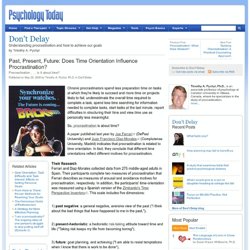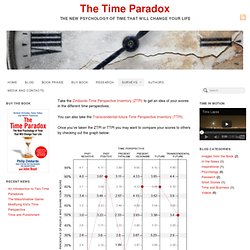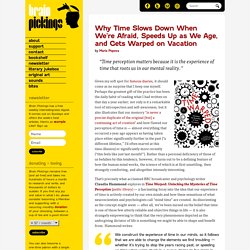

David Eagleman and Mysteries of the Brain. When David Eagleman was eight years old, he fell off a roof and kept on falling. Or so it seemed at the time. His family was living outside Albuquerque, in the foothills of the Sandia Mountains. There were only a few other houses around, scattered among the bunchgrass and the cholla cactus, and a new construction site was the Eagleman boys’ idea of a perfect playground. David and his older brother, Joel, had ridden their dirt bikes to a half-finished adobe house about a quarter of a mile away. When they’d explored the rooms below, David scrambled up a wooden ladder to the roof. In the years since, Eagleman has collected hundreds of stories like his, and they almost all share the same quality: in life-threatening situations, time seems to slow down. Eagleman is thirty-nine now and an assistant professor of neuroscience at Baylor College of Medicine, in Houston.
If Eagleman’s body bears no marks of his childhood accident, his mind has been deeply imprinted by it. Philip Zimbardo: The psychology of time. RSA Animate - The Secret Powers of Time. Past, Present, Future: Does Time Orientation Influence Procrastination?
Chronic procrastinators spend less preparation time on tasks at which they're likely to succeed and more time on projects likely to fail, underestimate the overall time required to complete a task, spend less time searching for information needed to complete tasks, start tasks at the last minute, report difficulties in structuring their time and view time use as personally less meaningful.

So, procrastination is about time? A paper published last year by Joe Ferrari (DePaul University) and Juan Francisco Diaz-Morales (Complutense University, Madrid) indicates that procrastination is related to time orientation. In fact, they conclude that different time orientations reflect different motives for procrastination. Ferrari and Diaz-Morales collected data from 275 middle-aged adults in Spain. Their participants complete two measures of procrastination that Ferrari describes as measures of arousal and avoidance motives for procrastination, respectively. The Time Paradox » An Introduction to Two Time Paradoxes. The Time Paradox » Surveys.
Take the Zimbardo Time Perspective Inventory (ZTPI) to get an idea of your scores in the different time perspectives.

You can also take the Transcendental-future Time Perspective Inventory (TTPI). Once you’ve taken the ZTPI or TTPI you may want to compare your scores to others by checking out the graph below: Explanation When looking at all data collected so far, the average score on each of the time perspectives is different. The average score for each time perspective lines up with 50% on the graph. The red dots and lines are not associated with the data in any way. Why Time Slows Down When We’re Afraid, Speeds Up as We Age, and Gets Warped on Vacation. By Maria Popova “Time perception matters because it is the experience of time that roots us in our mental reality.”

Given my soft spot for famous diaries, it should come as no surprise that I keep one myself. Perhaps the greatest gift of the practice has been the daily habit of reading what I had written on that day a year earlier; not only is it a remarkable tool of introspection and self-awareness, but it also illustrates that our memory “is never a precise duplicate of the original [but] a continuing act of creation” and how flawed our perception of time is — almost everything that occurred a year ago appears as having taken place either significantly further in the past (“a different lifetime,” I’d often marvel at this time-illusion) or significantly more recently (“this feels like just last month!”).
Discus chronologicus, a depiction of time by German engraver Christoph Weigel, published in the early 1720s; from Cartographies of Time. (Click for details) Donating = Loving.